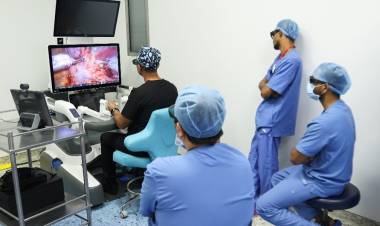Sleep, Stress, and Chronic Diseases Are Draining India’s Workforce, Finds The India Workplace Wellbeing Report 2025
1 in 10 employees suffer sleep disorders, cardiac disorders are spreading beyond seniors, rising in midlife and visible even below 40, and obesity among young professionals is accelerating chronic health risks
- The latest report warns that these trends are eroding productivity during India’s most economically dynamic years, urging companies to shift from access-only wellness programs to outcome-driven strategies
29th September, 2025: Truworth Wellness, a leader in corporate wellness solutions, has unveiled its latest study – India Workplace Wellbeing Report 2025: From Access to Outcomes. The report, based on health data from over 46,000 employees across industries, offers an in-depth view into the hidden health risks shaping India’s workforce and the urgent need for organisations to move from one-size-fits-all wellness initiatives to measurable, targeted outcomes.
The survey highlights how sleep deprivation, early onset of chronic diseases, and neglect of preventive care are undermining productivity during employees’ most productive years. It also reveals a critical disconnect: while companies are investing heavily in wellness programs, the outcomes are not matching the scale of investment.
Key findings from the report:
- Sleep deprivation is becoming a silent productivity crisis: Nearly 1 in 10 employees suffer from sleep disorders, with prevalence highest among those aged 23–39. Poor sleep translates into an average productivity loss of 11.3 days per year per employee, costing companies approximately INR 2.1 lakh annually.
- Chronic conditions are hitting earlier than ever: Cardiac disorders are no longer confined to seniors, with cases rising in midlife and increasingly visible below age 40. Thyroid disorders remain significant before 40, while diabetes prevalence doubles with each decade but is now surfacing even among employees in their 20s and 30s.
- Obesity is a gateway risk: 14% of employees are obese, with 71% of cases concentrated in the 25–35 age group. Obesity is strongly linked with co-morbidities including women’s health issues, thyroid disorders, and sleep disturbances, accelerating progression into more serious conditions.
- The prevention paradox: Despite being the most vulnerable, younger employees (20–29) are the least likely to undertake preventive health checks. 70% in this group reported skipping screenings, delaying detection of high-risk conditions.
- Everyday ailments drain productivity:Recurring headaches, digestive problems, and seasonal infections, especially among younger staff, translate into thousands of lost productive hours annually, while older employees disproportionately face musculoskeletal and respiratory challenges.
Commenting on the report, Rajesh Mundra, Founder and Executive Chairman of Truworth Wellness, said, “A decade ago, wellness meant insurance coverage or periodic health checks. Today, expectations are different. Employees and businesses alike need wellness programs that are predictive, personalised, and outcome-driven. The India Workplace Wellbeing Report 2025 highlights that chronic conditions are striking earlier, everyday health issues are draining productivity, and preventive care is being overlooked. Wellness can no longer be a checkbox activity; it must be embedded as a strategic business priority. The good news is that the return on investment is clear and measurable. Companies with outcome-driven wellness programs see 28% fewer sick leaves, 26% lower healthcare costs, and 11% higher revenue per employee. For every rupee spent, organisations save INR 289 in healthcare costs and INR 241 by reducing absenteeism.”
Conducted in collaboration with People Matters, the report recommends that companies make sleep and stress the foundation of wellness strategies, adopt gender- and age-responsive health pathways, shift from participation metrics to outcome-based measures, and establish early-warning systems to detect health risks before they escalate into costly chronic conditions.
By moving beyond access to measurable outcomes, Indian organisations have a unique opportunity to turn wellness into a strategic advantage, building healthier, more resilient, and more productive workplaces that match the scale of India’s economic ambition.




















